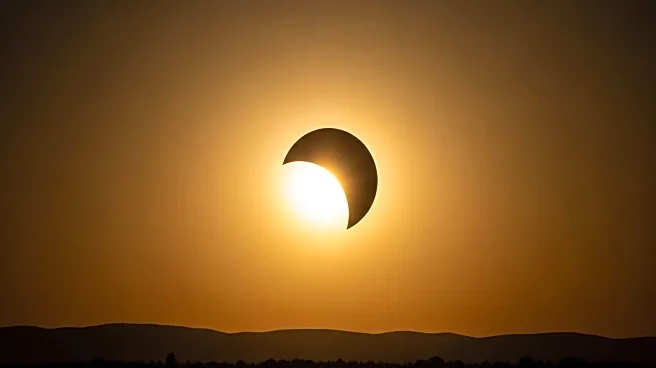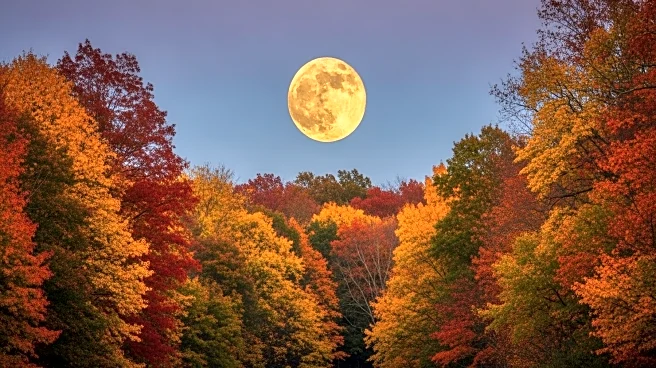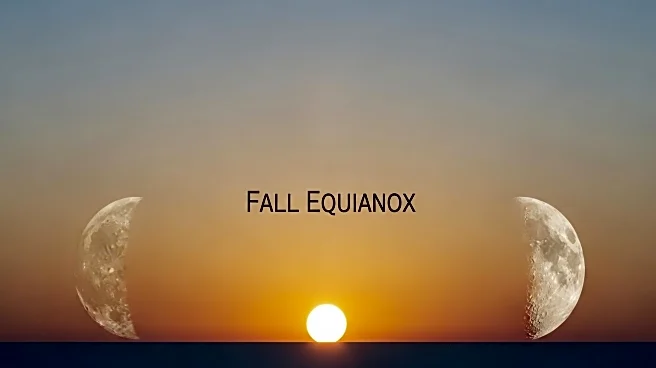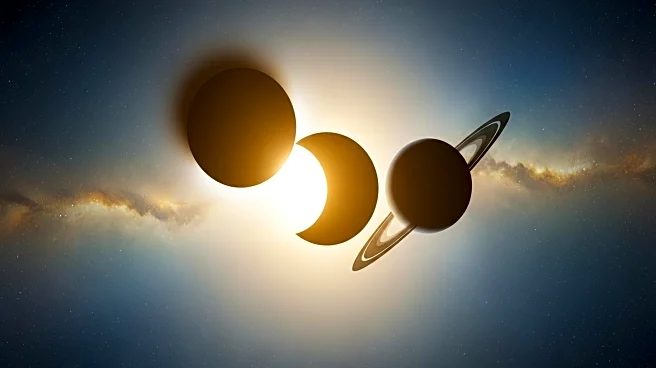What is the story about?
What's Happening?
The autumnal equinox occurs today at 2:19 P.M. EDT, signifying the start of astronomical autumn in the Northern Hemisphere. This event marks the end of summer and the beginning of autumn, while in the Southern Hemisphere, it signals the transition from winter to spring. During the equinox, the sun is positioned directly above the equator, resulting in equal sunlight distribution across both hemispheres. This celestial event is accompanied by specific times for sunrise, sunset, moonrise, and moonset, as well as a description of the moon phase, which is currently a waxing crescent at 1% illumination. Additionally, the Double Cluster in Perseus, consisting of open clusters NGC 869 and NGC 884, becomes a prominent celestial object observable during autumn. These clusters are located approximately 4.5° west-northwest of Eta Persei and can be viewed together at low power or individually at higher magnification.
Why It's Important?
The autumnal equinox is a significant astronomical event that marks the transition between seasons, affecting various aspects of life and nature. For the Northern Hemisphere, it signifies the end of summer and the onset of cooler temperatures, impacting agriculture, wildlife behavior, and human activities. The equal distribution of sunlight during the equinox can influence energy consumption patterns, as daylight hours begin to decrease. Additionally, the visibility of celestial objects like the Double Cluster in Perseus offers opportunities for amateur astronomers and stargazers to engage with the night sky, fostering interest in astronomy and science education. This seasonal change also holds cultural significance, as many societies celebrate harvest festivals and other traditions associated with the arrival of autumn.
What's Next?
As autumn progresses, the Northern Hemisphere will experience shorter days and longer nights, leading to changes in weather patterns and ecological dynamics. This shift may prompt adjustments in agricultural practices, as farmers prepare for harvest and winter planting. Wildlife will also adapt to the changing environment, with some species beginning migration or hibernation. In the realm of astronomy, the visibility of autumnal celestial objects will continue to provide opportunities for observation and study. The equinox may also inspire cultural events and celebrations, as communities embrace the seasonal transition. Additionally, the changing daylight hours could influence energy consumption and policy decisions related to resource management.
Beyond the Headlines
The autumnal equinox not only marks a physical change in the environment but also carries deeper cultural and psychological implications. For many, the transition to autumn is associated with introspection and preparation for the colder months ahead. This period often prompts reflection on personal goals and achievements, as well as planning for future endeavors. The equinox can also serve as a reminder of the interconnectedness of global ecosystems, as both hemispheres experience simultaneous yet opposite seasonal shifts. This awareness may encourage discussions on environmental conservation and sustainable practices, highlighting the importance of preserving natural resources for future generations.
AI Generated Content
Do you find this article useful?














